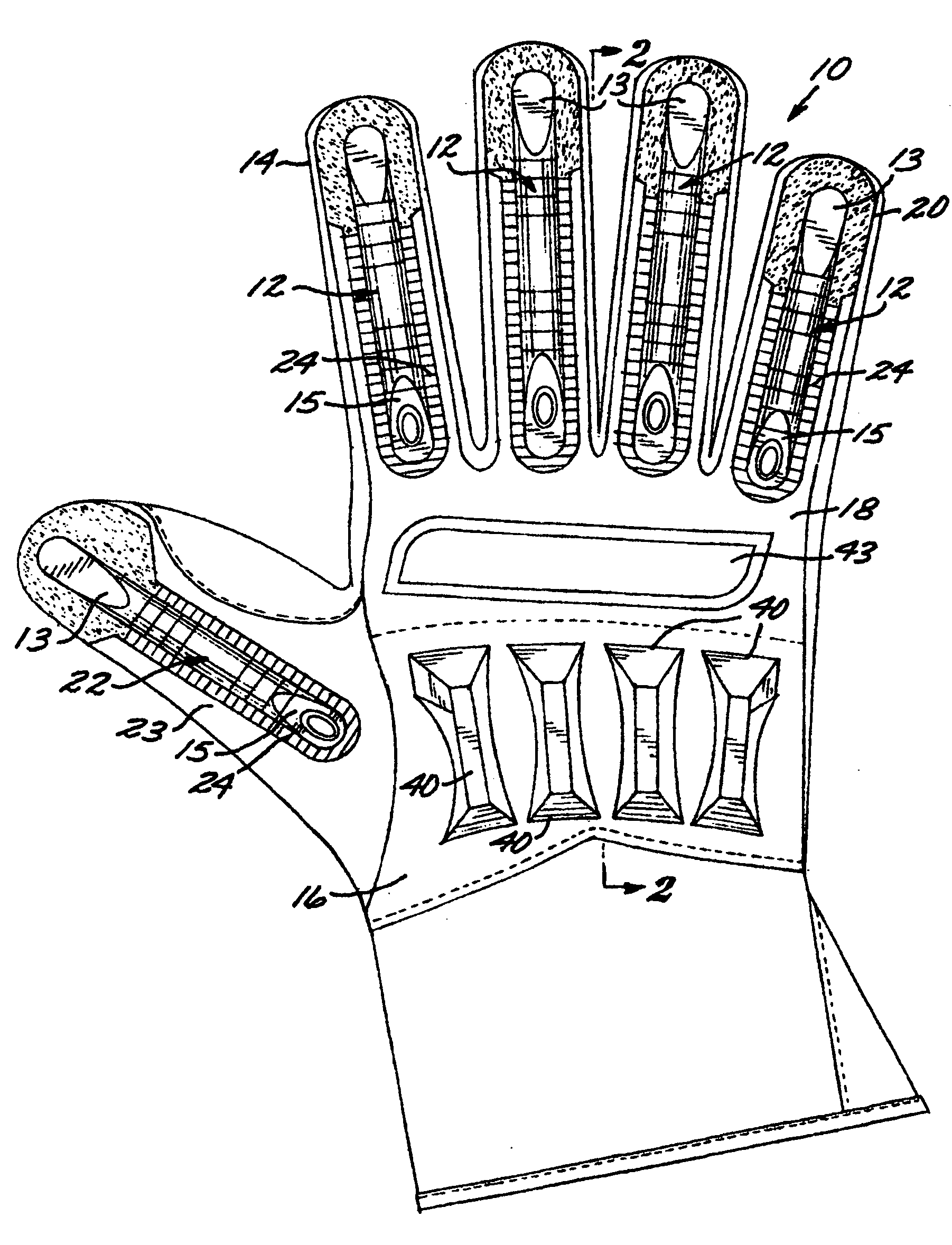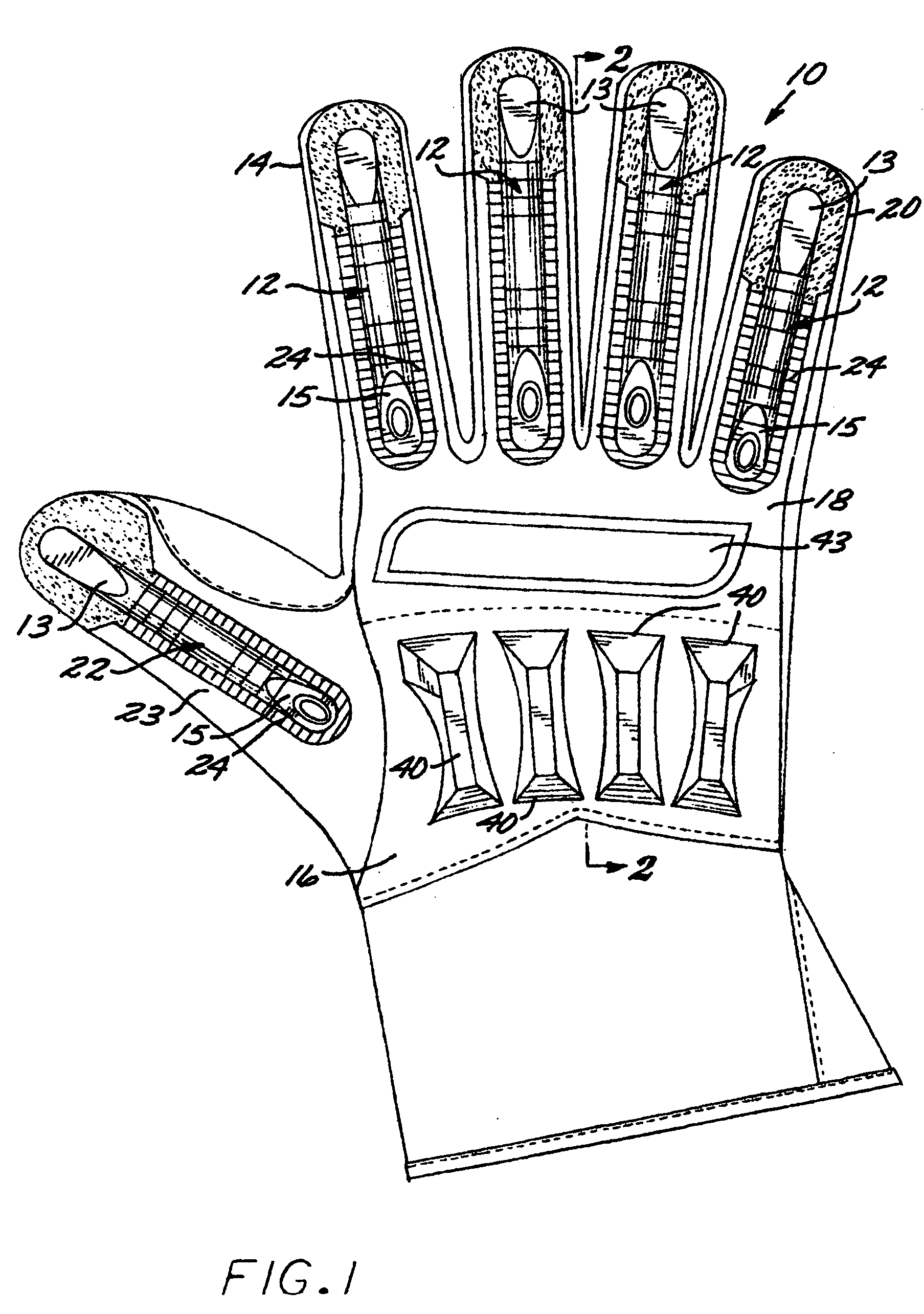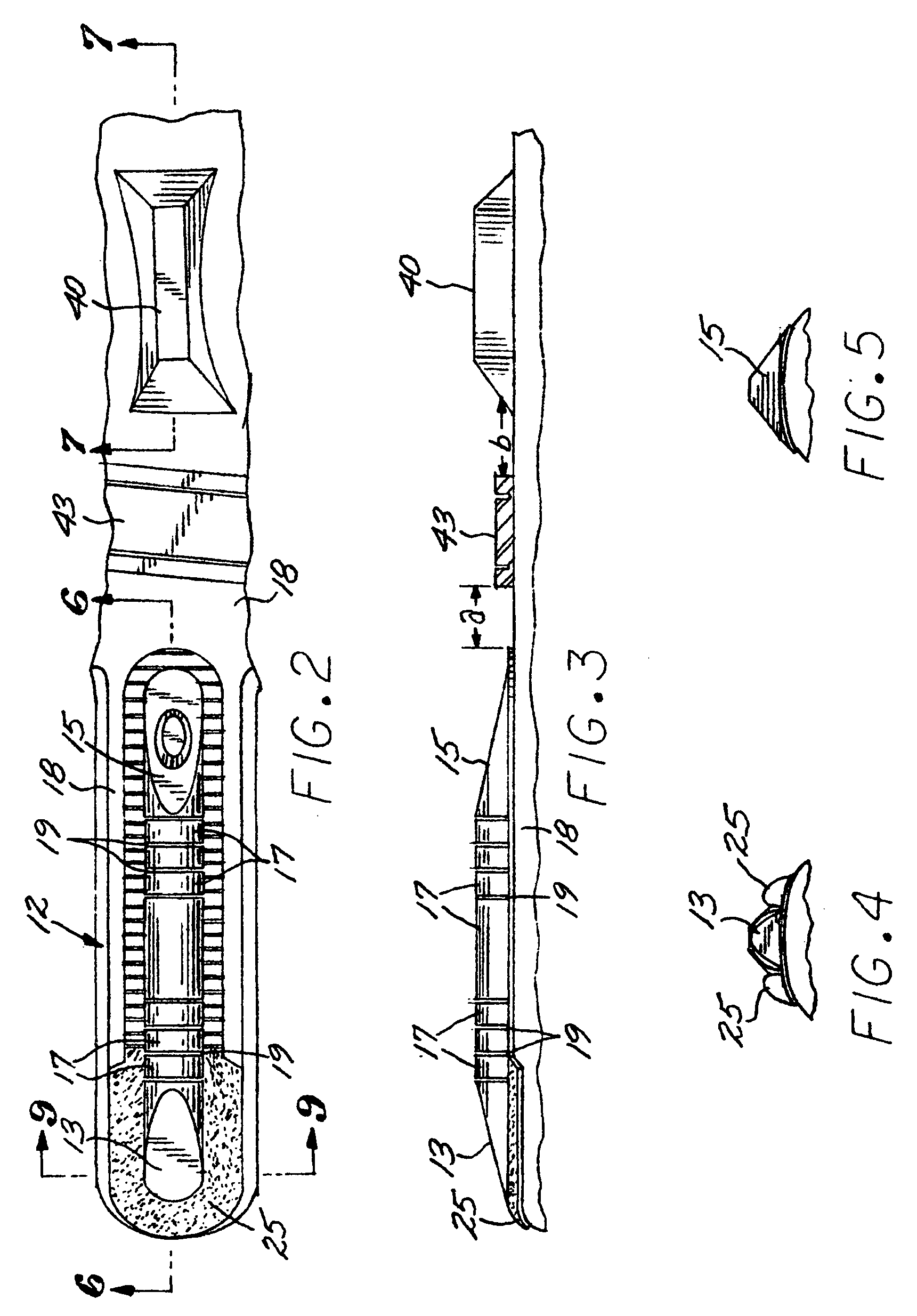Glove for use in the oil and natural gas extraction industries
a technology for oil and natural gas extraction and gloves, applied in gloves, clothing, applications, etc., can solve the problems of affecting the hand dexterity of workers, so as to reduce the occurrence of injuries, maximize the protection of the dorsal surface, and reduce the effect of hand dexterity
- Summary
- Abstract
- Description
- Claims
- Application Information
AI Technical Summary
Benefits of technology
Problems solved by technology
Method used
Image
Examples
Embodiment Construction
[0024]Referring now to FIG. 1, a plan view of the dorsal side of glove 10 is illustrated.
[0025]It should be noted that identical reference numerals in the figures refer to the same element.
[0026]The dorsal (back) side of glove 10 comprises a plurality of protective members 12 secured to fingers 14, 16, 18 and 20, and protective member 22 secured to thumb portion 23. The elongated and raised protective members 12 and 22 are fixed to a rubber base 24 member which, in turn, is fixed to the glove fabric on the corresponding finger / thumb portion. Member 12 and 22 have a front sloped portion 13, segmented portions 17 (FIG. 2) and back sloped portion 15. Base member 24 includes portion 25 to provide additional protection to the sides of the wearer's distal bones.
[0027]The protective members 12 is located substantially over the corresponding proximal phalanx, intermediate (or middle) phalanx, and distal phalanx finger bones of the wearer. Protective members 12 overlays the distal interphala...
PUM
 Login to View More
Login to View More Abstract
Description
Claims
Application Information
 Login to View More
Login to View More - R&D
- Intellectual Property
- Life Sciences
- Materials
- Tech Scout
- Unparalleled Data Quality
- Higher Quality Content
- 60% Fewer Hallucinations
Browse by: Latest US Patents, China's latest patents, Technical Efficacy Thesaurus, Application Domain, Technology Topic, Popular Technical Reports.
© 2025 PatSnap. All rights reserved.Legal|Privacy policy|Modern Slavery Act Transparency Statement|Sitemap|About US| Contact US: help@patsnap.com



